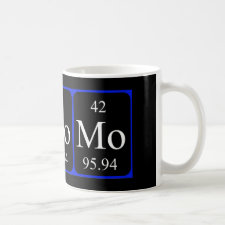
Authors: Lim KF, Holdsworth CI
Article Title: Effect of Formulation on the Binding Efficiency and Selectivity of Precipitation Molecularly Imprinted Polymers.
Publication date: 2018
Journal: Molecules
Volume: 23
Issue: (11)
Page numbers: ArticleNo2966.
DOI: 10.3390/molecules23112996
Alternative URL: https://www.mdpi.com/1420-3049/23/11/2996
Abstract: This study investigated the effect of feed formulation: the template:functional monomer (T:fM) and functional monomer:crosslinker (fM:X) ratios as well as the initiator concentration, on the binding performance and selectivity of caffeine (CAF) and theophylline (THP) imprinted polymers obtained by precipitation polymerisation in acetonitrile at 60 °C using methacrylic acid (MAA) and ethylene glycol dimethacrylate (EGDMA) as functional monomer and crosslinker, respectively. Template incorporation, monitored by quantitative 1H-NMR spectroscopy, ranged from 8 to 77% and was found to be more favourable at both high and low T:fM ratios, low fM:X ratio and high initiator concentration. The resulting T:fM ratio in most MIPs were found to be lower than their feed ratios. Incorporation of THP into the polymers was observed to be consistently higher than CAF and, for most MIPs, the observed binding capacities represent less than 10% of the incorporated template. Improved imprinting factors were obtained from molecularly imprinted polymers (MIPs) with high crosslinker content, i.e., fM:X ratio of 1:10, and high initiator concentration, i.e., initiator:total monomer (I:tM) ratio of 1:5, while T:fM ratio (1:2 to 1:8) was found not to influence binding capacities and imprinting factors (IF). The NIPs showed no preference for either CAF or THP in competitive selectivity studies while MIPs were observed to bind preferentially to their template with THP displaying higher selectivity (72-94%) than CAF (63-84%). Template selectivity was observed to increase with increasing initiator concentration, with MIPs from I:tM ratio of 1:5 shown to be the most selective towards CAF (84%) and THP (93%). The fM:X ratio only showed minimal effect on MIP selectivity. Overall, for the MIP systems under study, template incorporation, binding capacity, imprinting factor and selectivity are enhanced at a faster rate of polymerisation using an I:tM ratio of 1:5. Polymer particles obtained were between 66 to 140 nm, with MIPs generally smaller than their NIP counterparts, and have been observed to decrease with increasing T:fM and fM:X ratios and increase with increasing initiator concentration
Template and target information: caffeine, CAF, theophylline, THP
Author keywords: Molecularly imprinted polymers, precipitation polymerisation, molecularly imprinted microspheres, theophylline imprinted polymers, caffeine imprinted polymers, MIP formulation quantitative NMR



Join the Society for Molecular Imprinting

New items RSS feed
Sign-up for e-mail updates:
Choose between receiving an occasional newsletter or more frequent e-mail alerts.
Click here to go to the sign-up page.
Is your name elemental or peptidic? Enter your name and find out by clicking either of the buttons below!
Other products you may like:
 MIPdatabase
MIPdatabase









